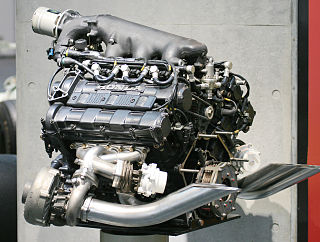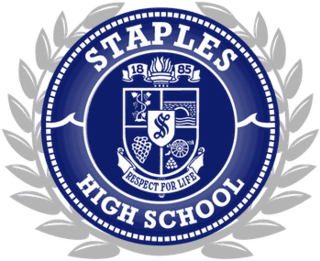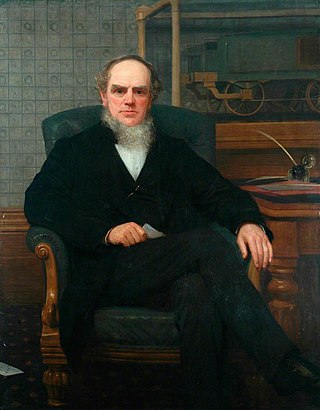
An android is a humanoid robot or other artificial being often made from a flesh-like material. Historically, androids existed only in the domain of science fiction and were frequently seen in film and television, but advances in robot technology have allowed the design of functional and realistic humanoid robots.

James Watt was a Scottish inventor, mechanical engineer, and chemist who improved on Thomas Newcomen's 1712 Newcomen steam engine with his Watt steam engine in 1776, which was fundamental to the changes brought by the Industrial Revolution in both his native country Great Britain, and the rest of the world.

George Westinghouse Jr. was an American entrepreneur and engineer based in Pennsylvania who created the railway air brake and was a pioneer of the electrical industry, receiving his first patent at the age of 19. Westinghouse saw the potential of using alternating current for electric power distribution in the early 1880s and put all his resources into developing and marketing it. This put Westinghouse's business in direct competition with Thomas Edison, who marketed direct current for electric power distribution. In 1911 Westinghouse received the American Institute of Electrical Engineers's (AIEE) Edison Medal "For meritorious achievement in connection with the development of the alternating current system". He founded the Westinghouse Electric Corporation in 1886.

A machine is a physical system that uses power to apply forces and control movement to perform an action. The term is commonly applied to artificial devices, such as those employing engines or motors, but also to natural biological macromolecules, such as molecular machines. Machines can be driven by animals and people, by natural forces such as wind and water, and by chemical, thermal, or electrical power, and include a system of mechanisms that shape the actuator input to achieve a specific application of output forces and movement. They can also include computers and sensors that monitor performance and plan movement, often called mechanical systems.

Westport is a town in Fairfield County, Connecticut, United States, along the Long Island Sound within Connecticut's Gold Coast. It is 48 miles (77 km) northeast of New York City. The town is part of the Western Connecticut Planning Region. Westport's public school system is ranked as the top public school district in Connecticut and 17th best school district in the United States.

Staples High School is a public high school in Westport, Connecticut, United States. It is named after Horace Staples, who founded the school on April 26, 1884. Westport is one of eight school districts in District Reference Group A.

Automatix Inc., founded in January 1980, was the first company to market industrial robots with built-in machine vision. Its founders were Victor Scheinman, inventor of the Stanford arm; Phillippe Villers, Michael Cronin, and Arnold Reinhold of Computervision; Jake Dias and Dan Nigro of Data General; Gordon VanderBrug, of NBS, Donald L. Pieper of General Electric and Norman Wittels of Clark University.

John Ramsbottom was an English mechanical engineer. Born in Todmorden, then on the county border of Yorkshire and Lancashire. He was the Chief Mechanical Engineer for the London and North Western Railway for 14 years. He created many inventions for railways but his main legacy is the split metal piston ring, virtually all reciprocating engines continue to use these today.
An elder or progenitor race, in science fiction, fantasy, or horror fiction, is an ancient race that not only preceded but helped shape the races that followed, often playing a significant role in the basis of the story. Humanity may have been descended from them, or they may be a different fictional race, such as elves, dwarves, or aliens. While in some cases, whether they currently exist is unclear, in other instances, members of an elder race still inhabit the world, either openly or in secret. In order to hide their existence, they may make use of a wainscot society, inhabit a parallel universe, only visiting the current one occasionally, or disguise themselves as a fool, deity, magician or trickster. One such example is in Lord of Light (1967), where highly advanced humans take on the identities of Hindu deities and act as gods to the less advanced colonists.

Joseph Frederick Engelberger was an American physicist, engineer and entrepreneur. Licensing the original patent awarded to inventor George Devol, Engelberger developed the first industrial robot in the United States, the Unimate, in the 1950s. Later, he worked as entrepreneur and vocal advocate of robotic technology beyond the manufacturing plant in a variety of fields, including service industries, health care, and space exploration.
Peter Mauzey, is an electrical engineer associated with the development of electronic music in the 1950s and 1960s at the Columbia-Princeton Electronic Music Center. He served as an adjunct professor at Columbia University while employed as an engineer at Bell Labs in New Jersey.

The Steam Man of the Prairies by Edward S. Ellis was the first U.S. science fiction dime novel and archetype of the Frank Reade series. It is one of the earliest examples of the so-called "Edisonade" genre. Ellis was a prolific 19th-century author best known as a historian and biographer and a source of early heroic frontier tales in the style of James Fenimore Cooper. This novel may be inspired by the steam powered invention of Zadoc Dederick. The original novel was reissued six times from 1868 to 1904. A copy of the first 1868 printing with its cover intact is owned by the Rosenbach Museum and Library, Philadelphia.

The history of robots has its origins in the ancient world. During the industrial revolution, humans developed the structural engineering capability to control electricity so that machines could be powered with small motors. In the early 20th century, the notion of a humanoid machine was developed.

The Temple of My Familiar is a 1989 novel by Alice Walker. It is an ambitious and multi-narrative novel containing the interleaved stories of Arveyda, a musician in search of his past; Carlotta, his Latin American wife who lives in exile from hers; Suwelo, a black professor of American History who realizes that his generation of men have failed women; Fanny, his ex-wife about to meet her father for the first time; and Lissie, a vibrant creature with a thousand pasts.

"I Ain't Marching Any More" is an anti-war song by Phil Ochs, a U.S. protest singer from the 1960s known for being a passionate critic of the American military industrial complex. Originally released on his 1965 album of the same name, "I Ain't Marching Any More" is one of Ochs's best-known songs.

The concept of engineering has existed since ancient times as humans devised fundamental inventions such as the pulley, lever, and wheel. Each of these inventions is consistent with the modern definition of engineering, exploiting basic mechanical principles to develop useful tools and objects.
"Draft Dodger Rag" is a satirical anti-war song by Phil Ochs, a U.S. protest singer from the 1960s known for being a harsh critic of the American military industrial complex. Originally released on his 1965 album, I Ain't Marching Anymore, "Draft Dodger Rag" quickly became an anthem of the anti-Vietnam War movement.

A steam hammer, also called a drop hammer, is an industrial power hammer driven by steam that is used for tasks such as shaping forgings and driving piles. Typically the hammer is attached to a piston that slides within a fixed cylinder, but in some designs the hammer is attached to a cylinder that slides along a fixed piston.

Marcelling is a hair styling technique in which hot curling tongs are used to induce a curl into the hair. Its appearance was similar to that of a finger wave but it is created using a different method.
















